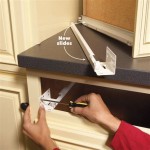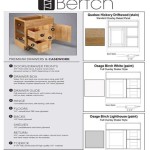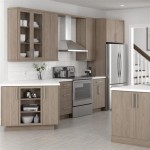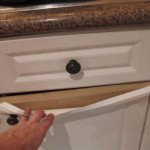Essential Preparation for Kitchen Cabinet Painting: Achieving a Pristine Surface
Before embarking on the task of painting your kitchen cabinets, meticulous preparation is paramount. The foundation of a flawless finish lies in thoroughly cleaning the surfaces to remove dirt, grease, and contaminants that could hinder adhesion. This article delves into the essential aspects of cleaning kitchen cabinets before painting, ensuring you achieve a professional-looking result.
Degreasing: Removing Unseen Grease
Kitchen cabinets are prone to accumulating grease from cooking and everyday use. This invisible barrier can impede paint adhesion, leading to peeling and flaking. To effectively degrease the cabinets, use a strong cleaning solution such as TSP (trisodium phosphate) or a commercial degreaser formulated for kitchen surfaces. Apply the solution liberally, allowing it to penetrate and break down the grease. Rinse thoroughly with clean water to remove any residue.
Removing Old Paint or Varnish
If your cabinets have been previously painted or varnished, these coatings need to be removed before applying new paint. Chemical paint strippers can be effective in removing thick layers of finish, but they contain harsh chemicals that require careful handling. Alternatively, use a paint scraper or heat gun to gently lift and remove the old coating. Be patient and cautious to avoid damaging the underlying wood.
Sanding: Smoothing Uneven Surfaces
Sanding plays a crucial role in preparing the cabinet surfaces for painting. It helps level uneven surfaces, remove any imperfections, and create a smooth base for the new paint. Use a fine-grit sandpaper (120-220) and sand in the direction of the wood grain. Avoid over-sanding, as this can weaken the wood. After sanding, wipe down the cabinets with a tack cloth to remove any dust.
Cleaning with TSP: Final Touch for Adhesion
TSP (trisodium phosphate) is a powerful cleaning agent that removes stubborn dirt, grease, and any remaining residue from the previous steps. Mix a solution of TSP according to the manufacturer's instructions and apply it to the cabinets using a sponge or cloth. Allow it to dwell for a few minutes before rinsing with clean water. TSP helps enhance the adhesion of the new paint by creating a slightly abrasive surface.
Drying Thoroughly: Avoiding Moisture Problems
Once the cabinets have been cleaned, it is essential to allow them to dry completely before painting. Moisture trapped beneath the paint can lead to blistering and peeling. Open windows or use a fan to circulate air and speed up the drying process. Allow at least 24 hours for the cabinets to dry thoroughly.
Conclusion
By following these essential steps and using the recommended cleaning methods, you can effectively prepare your kitchen cabinets for painting. A clean and well-prepared surface will ensure the new paint adheres properly, resulting in a durable and visually appealing finish that will enhance the aesthetics of your kitchen for years to come.

How To Clean Prep Wood Kitchen Cabinets Before Painting Do Dodson Designs

How To Clean Prep Wood Kitchen Cabinets Before Painting Do Dodson Designs

7 Amazing Ways To Clean Cabinets Before Painting Jim The Handyman

How To Clean Cabinets Before Painting Ultimate Guide With Pro Tips Grace In My Space

How To Clean Kitchen Cabinets Everyday Skate

What You Need To Know Before Painting Cabinets The Palette Muse

Refinish Kitchen Cabinets With Kilz Restoration Primer

How To Clean Kitchen Cabinets Before Painting Dengarden

How To Clean Cabinets Before Painting Ace Hardware

How To Prep And Paint Kitchen Cabinets Lowe S
Related Posts








